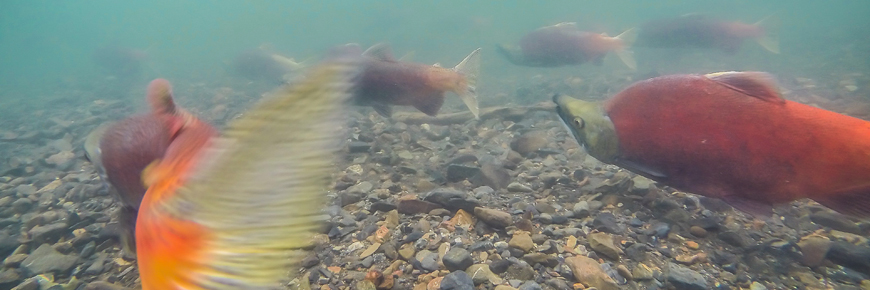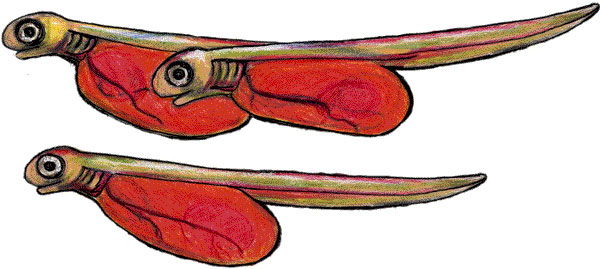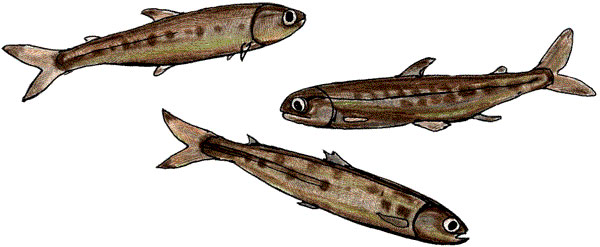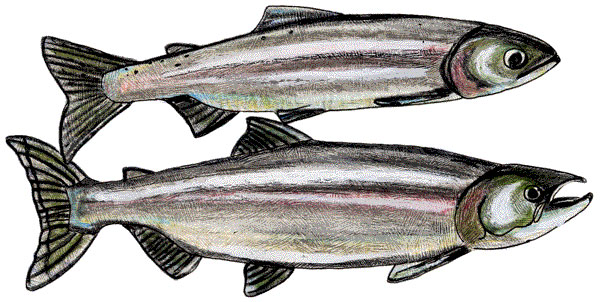
© Steven Hossack
Life cycle of Kokanee salmon
Kluane National Park and Reserve
Kluane's kokanee probably evolved from sockeye salmon that migrated from the Gulf of Alaska up the Alsek River into the Kathleen Lake system and became land-locked when Lowell Glacier surged and blocked their return to the ocean. Kluane's kokanee salmon complete their entire life cycle in the fresh waters of the Kathleen Lake ecosystem.

Spawners
At about four years, kokanee salmon mature and undergo dramatic changes in preparation for spawning. The male turns bright red and develops a slightly humped back and elongated jaw. Females turn a darker shade of red.

Eggs
When spawners arrive at Sockeye Creek, females use their tails to dig nests in the gravel. They then release as many as 1000 eggs for the males to fertilize. The female again uses her tail to cover the eggs with gravel. Once all the eggs are laid, the adults die.

Alevins
Kokanee eggs remain in the gravel of the spawning stream, hatching out in January or February as "alevins" nourished by egg sacs attached to their bodies, but still remaining in the gravel.

Fry
In a few months alevins develop into kokanee "fry" which emerge from the gravel and ride the currents downstream.

Adults
Kokanee adults then complete the remainder of their life cycle in the fresh waters of the Kathleen Lake ecosystem to begin the cycle again.
Learn more
Parks Canada has been monitoring kokanee salmon as they return to spawn in Sockeye Creek for over forty years.
Learn more about ecological monitoring in Kluane National Park and Reserve.
- Date modified :